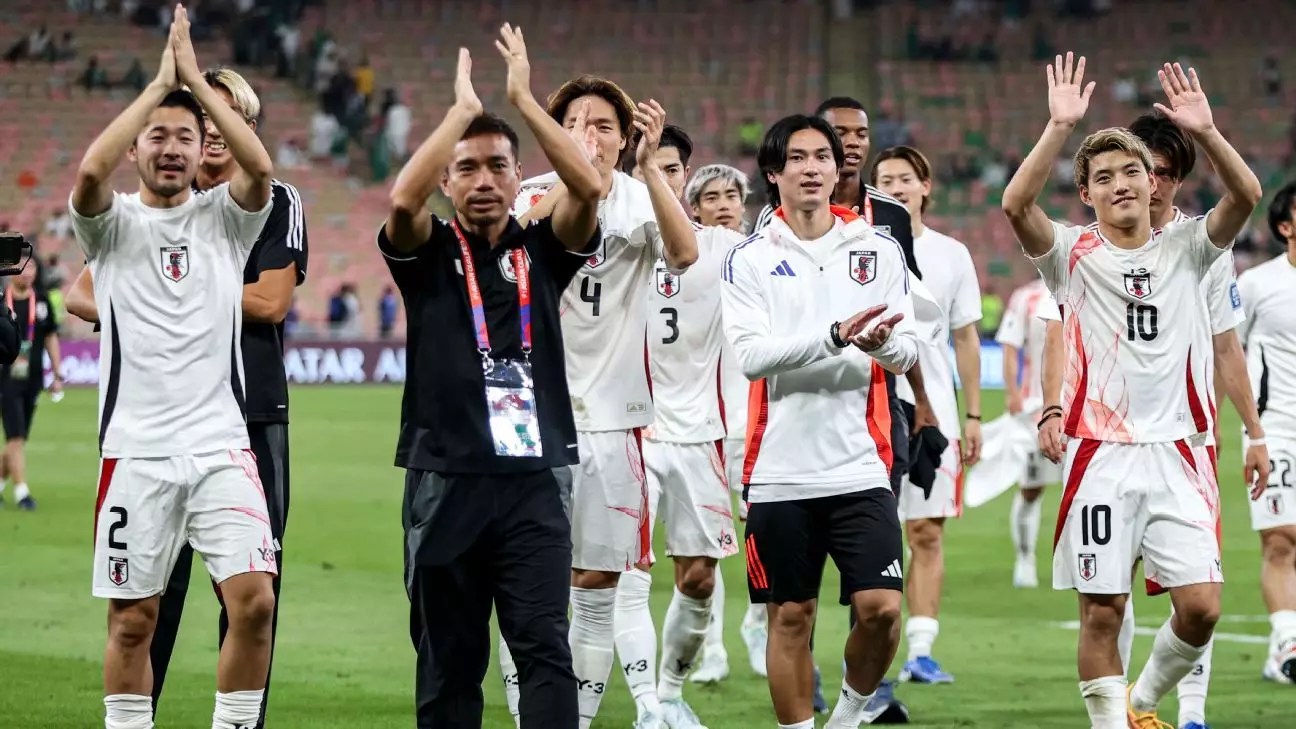In today’s rapidly evolving world of football, coaching tenures have become exceptionally transient. This volatility is starkly illustrated by Hajime Moriyasu, the head coach of Japan’s national team, who has defied this trend by successfully navigating multiple FIFA World Cup cycles. As of now, there are only seven coaches from the 32 who participated in the 2022 Qatar World Cup still in active positions, highlighting how rare it is for a coach to maintain a long-term role. Moriyasu, who took over in 2018 after Japan’s round-of-16 exit from Russia, has managed to not just survive but thrive in an environment fraught with challenges and high expectations.
His impressive record is particularly notable in the context of a coaching landscape where stability is elusive. Coaches like Argentina’s Lionel Scaloni and France’s Didier Deschamps have made headlines with their tenures, but Moriyasu’s achievement becomes even more pronounced when one considers that half of Asia’s coaches from the recent Asian Cup have already been replaced. Moriyasu’s enduring presence at the helm signals not just loyalty from the Japan Football Association (JFA) but also a growing belief in his vision and methodology—a testament to his skills as a tactician.
Japan’s footballing journey has been remarkable under Moriyasu, especially in the current World Cup qualifying campaign. The Samurai Blue are not merely participating; they are dominating. Over two phases of Asian qualifiers, Japan has not only accumulated points but also showcased superior defensive fortitude and attacking prowess. Despite initial struggles, including a near dismissal during the 2022 qualification campaign, Moriyasu ensured a seamless qualification to Qatar with crucial wins, including a significant victory over Australia.
The statistics tell a compelling story: Japan’s record boasts a flawless run in the second phase with five wins and an astonishing 21 goals scored, all while maintaining a clean sheet. This flawless interaction with the ball is a stark contrast to the more pragmatic approaches sometimes associated with Japanese football. Central to Japan’s resurgence is a younger generation of players, often referred to as “The Tokyo Olympics Generation,” who are stepping up as key contributors on their European clubs. Their increased exposure on the international stage is rejuvenating Japanese football and forging paths to future successes.
A Cultural Shift in Football Philosophy
Building on the younger talent pipeline is Japan’s ambition to shift its footballing culture. Underlining this is the JFA’s ambitious “Japan’s Way,” which outlines a profound philosophy for the future—aiming for 10 million football families and aspirations to win the FIFA World Cup by 2050. This reflects a dual aim: enhancing technical prowess on the field while fostering a vibrant, grassroots football culture that permeates society.
Such a holistic approach highlights the importance of community engagement, from youth development to fan involvement, ensuring football is not just a sport for elites but a joy accessible to everyone. Japan’s endeavor to redefine itself through indigenous values rather than merely replicating the success models of established football nations shows the confidence in its unique identity. Football has become not simply a competitive endeavor but a cultural phenomenon that resonates with the population.
Testing Times and Future Aspirations
As Japan gears up for its next fixtures, including a crucial match against Australia, there lie significant challenges ahead. While Japan has been unbeaten in 20 of their last 22 matches, it’s vital to remember that the two losses occurred during the Asian Cup—signifying vulnerabilities that need addressing. The upcoming qualifiers serve as a gauge for Moriyasu’s side—an opportunity for reflection and assessment of their growth as they adjust after the Asian Cup disappointment.
The rivalry with Australia bears historical significance; Japan has consistently demonstrated superiority on home soil. While the Socceroos have struggled in their most recent campaigns, they are known for historically stepping up against formidable opponents. From Australia’s perspective, a strong showing in Japan could provide much-needed momentum under new coach Tony Popovic. However, the weight of history favors the Samurai Blue, who seem poised to continue their impressive form.
The current trajectory of Japanese football under Moriyasu is promising. As they prepare for upcoming challenges, the synergy between an exhilarating brand of football and a well-thought-out long-term strategy appears to be bridging tradition with modernity. With burgeoning talent and a renewed national philosophy, Japan is not just chasing qualification but also aspiring to position itself as a global powerhouse in football.
Ultimately, the spotlight now rests on Moriyasu and his players, who have the chance to exhibit their growth and vision. Their ongoing narrative is not merely about individual victories but the collective ambition of a nation that sees itself standing at the threshold of greatness in the footballing hierarchy.


Leave a Reply